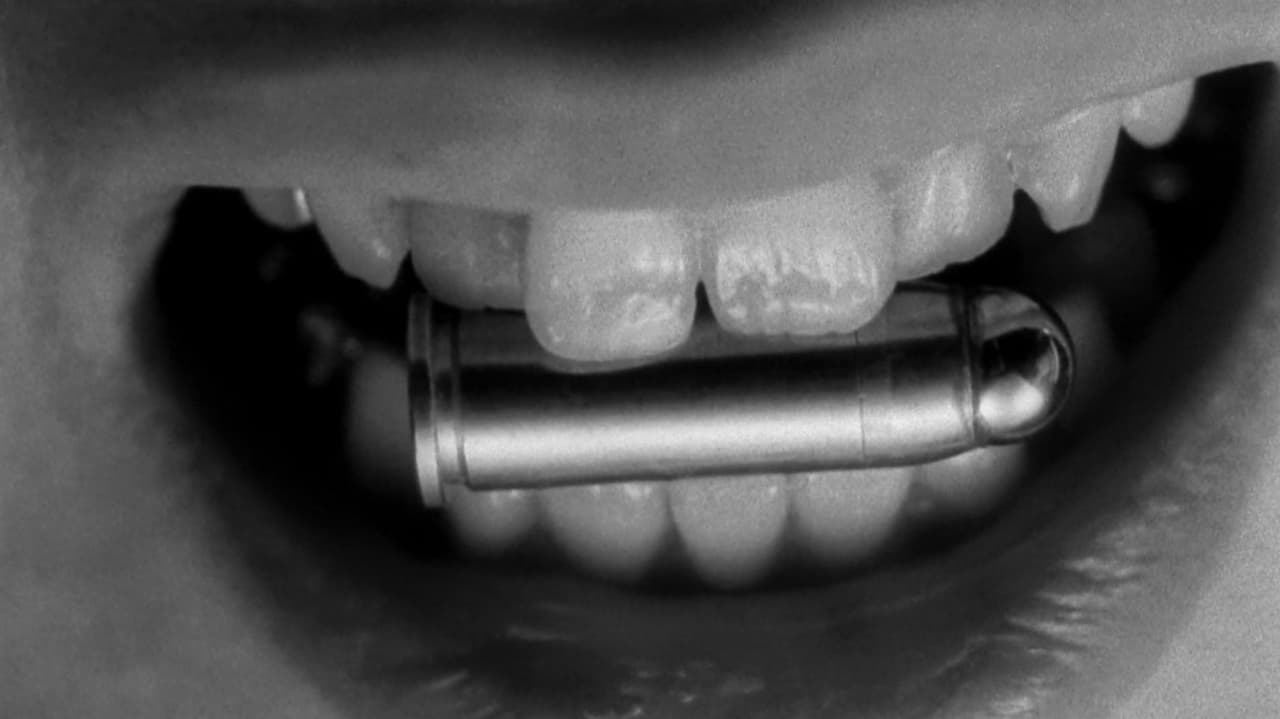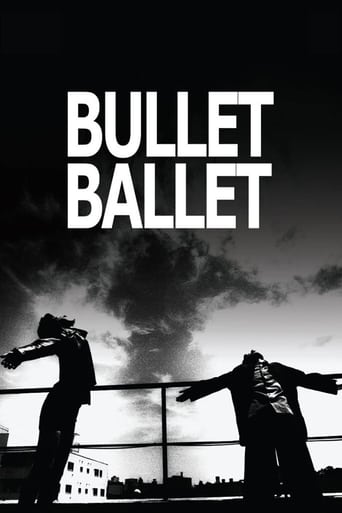K_Todorov
A visually stunning experiment in motion picture storytelling Shynia Tsukamoto's "Bullet Ballet" is a semi-revenge tale, semi-philosophical examination of the human condition. It explores themes and ideas concerning both the moral and social collapse of the modern man. As his earlier works such as "Tetsuo" and "Tokyo Fist" Tsukamoto uses the visual representation, the composition of individual scenes, minimalist colour palette, in this case a wonderfully sharp contrast between black and white, to express his ideas rather than just bombarding us with excessive amounts of expository dialogue. From the opening Goda (Shinya Tsukamoto) seems content with his life. He has a nice job working as a commercial director, has a long term girlfriend, and at the moment he is sitting at a table apparently drinking. The phone rings, its his girlfriend. They have a nice little chat, and Goda seems pleased, and why shouldn't he be, everything is alright. The conversation ends, Goda returns home and finds his girlfriend dead. She killed herself. She killed herself with a gun. Goda doesn't understand why, everything was alright, just a minute ago they were talking on the phone and now she killed herself. She killed herself with a gun. Goda is lost. He is standing in front of an old mirror in a old room, drops of water violently hitting a half-dead cockroach on the floor, Goda raises his hand, as if a gun, he aims at his reflection, tense, and pulls the imaginary trigger three times. Titles roll "Bullet Ballet", a dance of death. A dance of death, is the easiest way to describe the movie itself, but not in the usual way mind you. Bullet Ballet is more concerned with its characters and their lack of… connection, to put it bluntly, with the world, as Goda becomes obsessed with his girlfriend's death he tries to acquire the same gun with which she shot herself. Meanwhile he meets up with this girl he once helped, and gets in trouble with some guys from the gang she's in. The girl,Chisato(Kirina Mano), is on first impression simply suicidal, but that is just first impression. Goda's obsession grows, hardened by a burning desire for revenge against the gang, he sets out to make his own gun. And then it hits us, the reality of the situation, just hints at first, but even so it is becoming clear what is happening to this man. The gun, you see, is simply a metaphor, and of course it is a metaphor for death. He wants to understand his girlfriend's death, but he is losing himself in the process. He is losing his connection to life. Reason for being? He has none. And as the story slowly rolls forward, there is this impression that the dance of death is really the idea of facing death, witnessing death, surviving death, and then being reborn again. This idea comes the observation of the relationship between Goda and Chisato, the two characters obviously seem connected by their disconnection from the outside world. They understand each other. In a way they are one character split in two, with each segment providing hints to the overall motivation of the two. Chisato provides proof that Goda is dancing with death like she is, while Goda's past hints to a traumatic experience that lead Chisato to her current disposition. The final scene is the catharsis of the story, when the two characters finally experience all the chaos, finally witnessing all the death, seeing its effect on others, are free from their emotional blockage. Shinya Tsukamoto wrote, directed and produced "Bullet Ballet". He was also in charge of lightning, set design … and played a leading role. The man, much like his Tetsuo is a machine, a one man film crew. Chu Ishikawa, as usual, does the soundtrack and what a soundtrack it is, as percussive industrial music hits you like a jackhammer in some of the more dark scenes. While a gentler, more depressing, yet nevertheless more optimistic tune is composed for the film's ending scene. Beyond all the horror of death, beyond all the disturbing scenes of violence, beyond the sociopathic behavior, "Bullet Ballet" shines with its search for humanity at the darkest places, at the darkest moments, at the darkest times.
Henry Fields
There's a feeling you get after watching "Bullet Ballet", and it's like the story is kind of incomplete. There's a lack of something, maybe a little information about the characters and their lives. That's a big burden and it doesn't matter how attractive is the look of the film with all those nebulous textures, it does not matter if Tsukamoto probes that he knows how to use the camera (although sometimes everything looks a little bit dizzy), 'cause if you don't have a story or a script, you got nothing.It's a short movie and still you feel like it will never end. That's what it happens when you don't have a clue about what's going on in the screen (shoots, gangs, suicide... ???).*My rate: 4/10
DKiller
First off, those expecting the David Lynch-on-Angel Dust style of the 1st Tetsuo movie and Tokyo Fist will probably be disappointed. Like Tokyo Fist, this is Shinya Tsukamoto at his most personal and heartbreaking. I saw this film at the Montreal FantAsia festival and came out puzzled by what I saw. Here I was, expecting Tsukamoto to cut loose again...and this movie was, by the standards of his earlier work, relatively calm. I'd compare it to Scorsese's "The King of Comedy" in that people will soon be hailing this one as a masterpiece.The film is the story of two people linked together by ideals and tragedy. Tsuda is a director of commercials who is heartbroken by the suicide of his fiancee for mysterious reasons. He soon develops a fascination with guns.
Later on, we meet Chisato, a young woman who is the driving force behind a gang of Japanese toughs. Tsuda forms a bond with Chisato through multiple encounters with the gangs. Whereas the other members of the gang are middle-class kids looking for fun, Chisato has a death wish and a suicidal streak which propels her to violence.Here's hoping that Bullet Ballet gets released soon, as it is technically perfect as well as emotionally dead-on.

